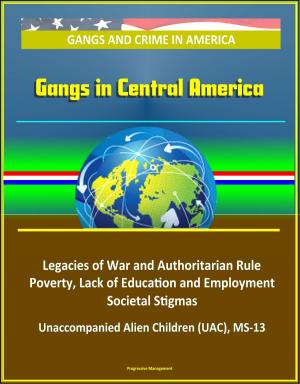EMS Safety: Techniques and Applications, plus Alive on Arrival, Tips for Safe Emergency Vehicle Operations - Comprehensive Manual on Hazards Faced by Emergency Medical Services Providers
Nonfiction, Health & Well Being, Medical, Allied Health Services, Emergency Medical Services, Health, Health Care Issues| Author: | Progressive Management | ISBN: | 9781476408538 |
| Publisher: | Progressive Management | Publication: | July 31, 2012 |
| Imprint: | Smashwords Edition | Language: | English |
| Author: | Progressive Management |
| ISBN: | 9781476408538 |
| Publisher: | Progressive Management |
| Publication: | July 31, 2012 |
| Imprint: | Smashwords Edition |
| Language: | English |
The United States Fire Administration (USFA) publication EMS Safety: Techniques & Applications was developed as a comprehensive manual to address the hazards faced by EMS providers and describe ways in which emergency responders can and should deal with these risks. The purpose of the manual is to reduce the number of EMS personnel killed and injured in the line of duty across the country by providing them with the information they need to create an appropriate margin of safety during the performance of their duties. This manual addresses a broad range of safety considerations for firefighters and other EMS providers. Topics addressed include the universal elements of safe EMS operations such as vehicle operation and personal protective equipment. Scene operations, health maintenance, and manager responsibilities to safety are also included in the context of this manual.
Section I * Universal Elements of Safety * Chapter 1 - Why Safety? * Chapter 2 - Emergency Medical Vehicle Operations * Chapter 3 - Lifting * Chapter 4 - Teamwork and Attitude * Chapter 5 - Personal Protective Equipment * Section II Scene Operations * Chapter 6 - Arrival and First Contact * Chapter 7 - Outdoor Operations * Chapter 8 - Indoor Operations * Chapter 9 - Hazardous Materials Situations * Chapter 10 - Helicopter Safety * Chapter 11 - Hostile Situations * Section Ill Health Maintenance * Chapter 12 - Stress Management * Chapter 13 - Basic Physical Fitness * Chapter 14 - Infection Control * Section IV Manager Responsibilities * Chapter 15 - Safety and the Manager * Chapter 16 - Building a Focus on Safety
This manual on Emergency Medical Services Safety has been developed to assist EMS providers in the reduction of line-of-duty injuries, illnesses and fatalities. It provides a framework for developing programs that will create an appropriate margin of health and safety during the performance of their duties.
The hazards of hostile or unknown environments, communicable diseases, violence, hazardous materials and critical incident stress unfortunately continue to be on the rise and effect those emergency responders in the fire and EMS departments across the United States. Additional hazards such as those associated with driving, lifting and carrying, and overexertion also effect the morbidity of those providing EMS services.
This manual is intended to be used for the implementation of programs that identify the hazards faced by EMS providers and describes the ways in which these responders can and should deal with these risks.
We encourage all EMS providers to address the issue of occupational safety and health programs. A properly protected, trained and staffed EMS response will not only provide a greater margin of safety to the members, but will enhance the service to the citizens that we are sworn to protect. With a positive approach to these issues we will better understand and, most importantly, prevent the injuries and fatalities that plague this occupation.
The United States Fire Administration (USFA) publication EMS Safety: Techniques & Applications was developed as a comprehensive manual to address the hazards faced by EMS providers and describe ways in which emergency responders can and should deal with these risks. The purpose of the manual is to reduce the number of EMS personnel killed and injured in the line of duty across the country by providing them with the information they need to create an appropriate margin of safety during the performance of their duties. This manual addresses a broad range of safety considerations for firefighters and other EMS providers. Topics addressed include the universal elements of safe EMS operations such as vehicle operation and personal protective equipment. Scene operations, health maintenance, and manager responsibilities to safety are also included in the context of this manual.
Section I * Universal Elements of Safety * Chapter 1 - Why Safety? * Chapter 2 - Emergency Medical Vehicle Operations * Chapter 3 - Lifting * Chapter 4 - Teamwork and Attitude * Chapter 5 - Personal Protective Equipment * Section II Scene Operations * Chapter 6 - Arrival and First Contact * Chapter 7 - Outdoor Operations * Chapter 8 - Indoor Operations * Chapter 9 - Hazardous Materials Situations * Chapter 10 - Helicopter Safety * Chapter 11 - Hostile Situations * Section Ill Health Maintenance * Chapter 12 - Stress Management * Chapter 13 - Basic Physical Fitness * Chapter 14 - Infection Control * Section IV Manager Responsibilities * Chapter 15 - Safety and the Manager * Chapter 16 - Building a Focus on Safety
This manual on Emergency Medical Services Safety has been developed to assist EMS providers in the reduction of line-of-duty injuries, illnesses and fatalities. It provides a framework for developing programs that will create an appropriate margin of health and safety during the performance of their duties.
The hazards of hostile or unknown environments, communicable diseases, violence, hazardous materials and critical incident stress unfortunately continue to be on the rise and effect those emergency responders in the fire and EMS departments across the United States. Additional hazards such as those associated with driving, lifting and carrying, and overexertion also effect the morbidity of those providing EMS services.
This manual is intended to be used for the implementation of programs that identify the hazards faced by EMS providers and describes the ways in which these responders can and should deal with these risks.
We encourage all EMS providers to address the issue of occupational safety and health programs. A properly protected, trained and staffed EMS response will not only provide a greater margin of safety to the members, but will enhance the service to the citizens that we are sworn to protect. With a positive approach to these issues we will better understand and, most importantly, prevent the injuries and fatalities that plague this occupation.















